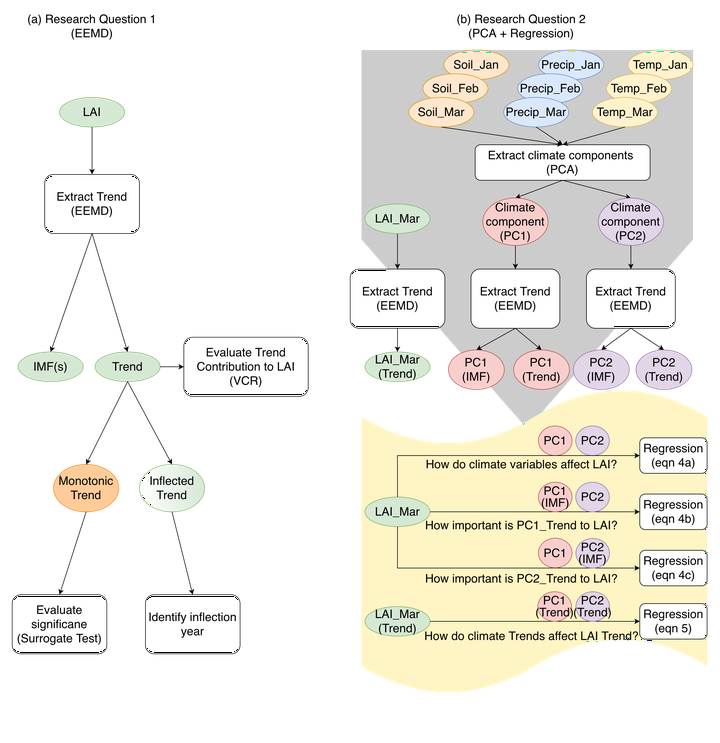Moisture and temperature influences on nonlinear vegetation trends in Serengeti National Park

Abstract
While long-term vegetation greening trends have appeared across large land areas over the late 20th century, uncertainty remains in identifying and attributing finer-scale vegetation changes and trends, particularly across protected areas. Serengeti National Park (SNP) is a critical East African protected area, where seasonal vegetation cycles support vast populations of grazing herbivores and a host of ecosystem dynamics. Previous work has shown how non-climate drivers (e.g. land use) shape the SNP ecosystem, but it is still unclear to what extent changing climate conditions influence SNP vegetation, particularly at finer spatial and temporal scales. We fill this research gap by evaluating long-term (1982–2016) changes in SNP leaf area index (LAI) in relation to both temperature and moisture availability using Ensemble Empirical Mode Decomposition and Principal Component Analysis with regression techniques. We find that SNP LAI trends are nonlinear, display high sub-seasonal variation, and are influenced by lagged changes in both moisture and temperature variables and their interactions.